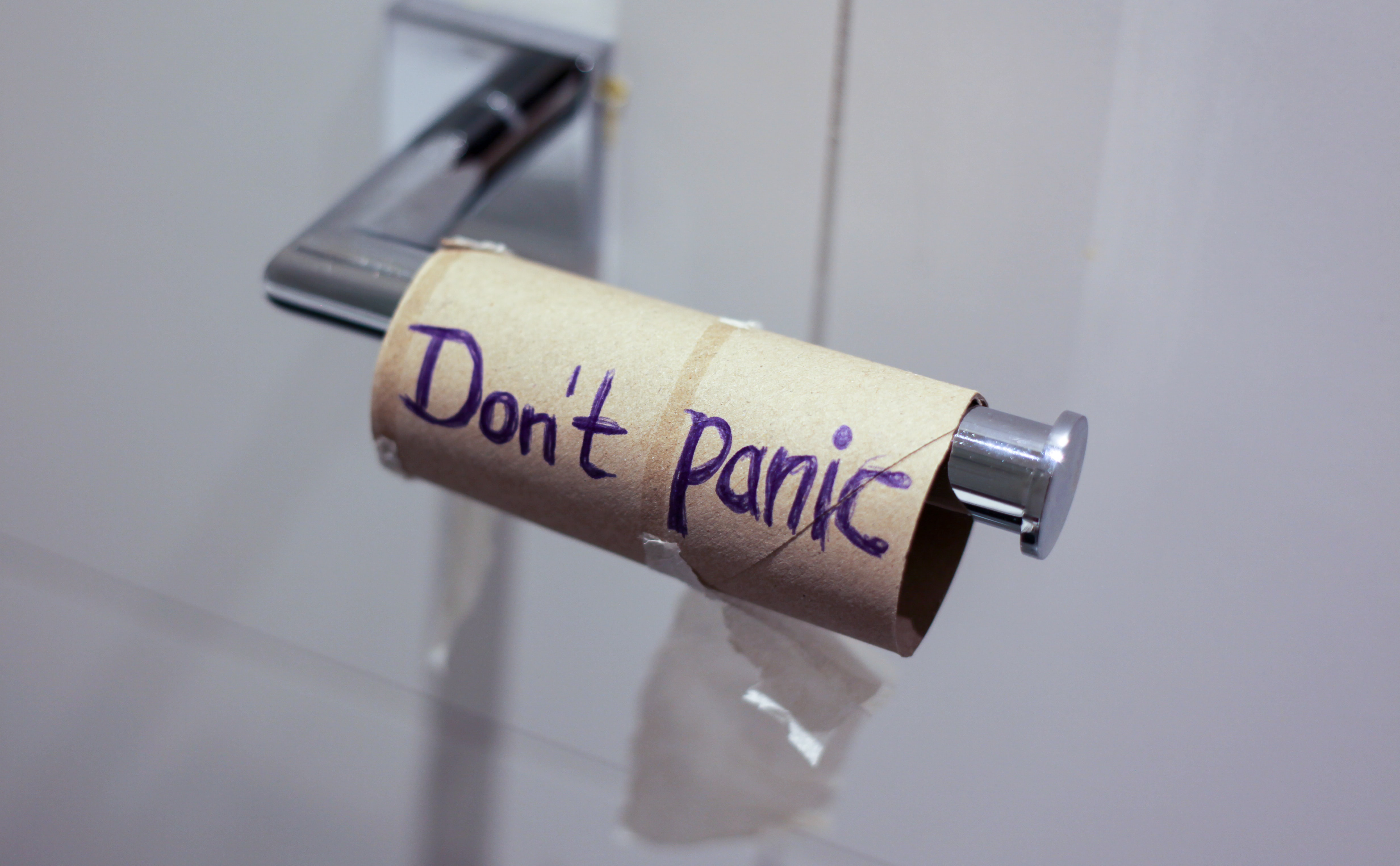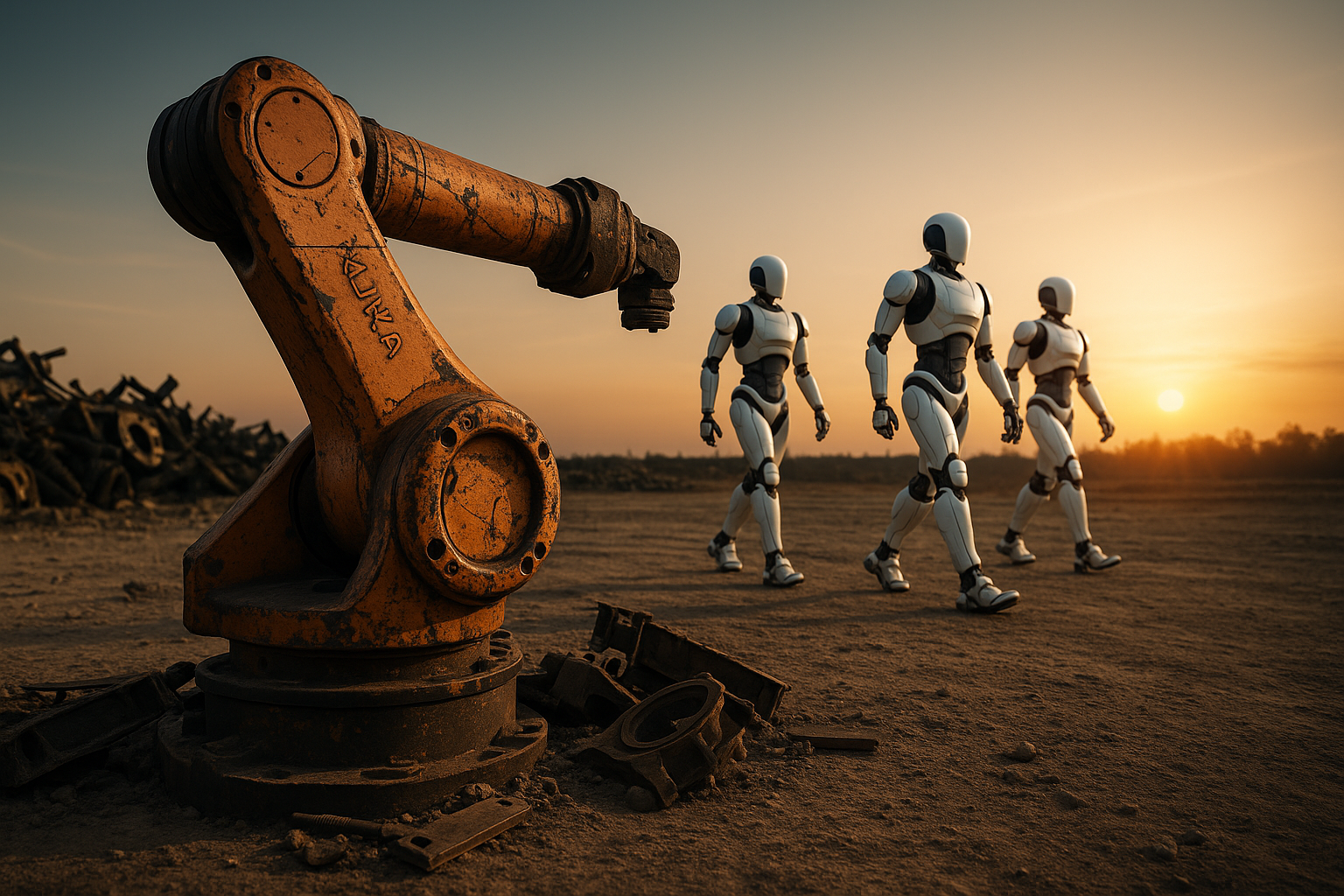“We are on the brink of a global catastrophe!”
“We are facing the apocalypse!”
“It will soon be too late to avert climate collapse!”
When was the last time you read a headline like this? Actually, you only have to walk through the (digital) landscape with your eyes open to come across one of these dramatic prophecies in no time at all. These supposed premonitions quickly bring to mind the image of the Last Judgement and on many have a similar effect as their biblical counterpart over 2000 years ago: fear.
Sure – in view of the significant increase in CO2 concentrations that we humans have caused through the careless use of fossil fuels, it is not the time to lie lazily recline and relax under a parasol in Bali for the rest of our planet’s life. But, what exactly do these headlines trigger in us? Let’s ask ourselves: Do the words “catastrophe”, “apocalypse” and “climate collapse” make us fearful and terrified, or are we bursting with drive and courage to change? What is scaremongering supposed to achieve? And what does it actually achieve?
Climate fear paralyzes
For most people, such descriptions trigger one thing above all: negative feelings and passivity. The term “climate anxiety” is often used in relation to the climate crisis. This term, which psychologists often consider to be very inappropriate, has now become a word that is used to describe the psychological reaction of many people to the natural threat posed by climate change. The mere fact that a term exists for this phenomenon expresses the enormous presence of the problem surrounding this fear.
Under hashtags such as #ecoanxiety or #climateanxiety, young people in particular share their climate fears on social networks. And this exchange about the fear of climate change is important. But the way it is currently being conducted is hardly getting us any further. The fear of “climate collapse” paralyzes us and can even manifest itself in mental and physical problems: Depression, anxiety disorders, and increased substance abuse are just examples of the impact of climate anxiety on the health of many people, especially young people.
What it doesn’t translate into is progressive ideas that can get us out of the climate mess or at least steer us in the right direction. And that is precisely the problem.
Fear narratives prevent active improvement
Another effect that the constant repetition of climate alarmism can have is to wear out different scenarios in society – or to put it more simply: we become numb. When we read for the umpteenth time that the polar ice caps are melting, the rainforest is dying, and the world will end tomorrow, this dramatic information loses its impact. The threat of collapse becomes the norm.
Unfortunately, this not only makes it harder for those who want to stir up fear without much content to reach the majority of society, but also our scientists and all those who should really be heard. Climate fear blocks our view of the essentials – at every turn. And it can be contagious – precisely when people are constantly discussing one and the same problem in their digital echo chambers without keeping their eyes open for constructive solutions.
Regrettably, even government-affiliated institutes such as the DIW are actively spreading scaremongering when they claim that achieving the 1.5-degree target depends on stopping the excavator in Lützerath. Such shortcuts are simply wrong and only damage the seriousness of efforts to bring about change.
What do we achieve with fear and “being against something”? Nothing – simply nothing. Once CO2 is in the air, it doesn’t disappear on its own. It will remain in the atmosphere for the foreseeable future and thus continue to drive global warming.
Only by restructuring our basic chemical infrastructure away from petrochemical processes towards H2-based processes and restructuring the cement industry will we massively reduce our CO2 production. With the help of new technologies such as carbon capture, we will be able to save something.
More than just a climate problem
As threatening as the climate problem is, we should not forget that we also have other issues that we should urgently address as a society. Anyone lacking inspiration can take a look at the 17 SDG goals. Particularly in the media, the climate problem often dominates or is used as a killer argument along the lines of, “If we continue to destroy the planet, we won’t need to find a solution to hunger, poverty and inequality!”. People who use such phrases are making themselves too comfortable. This “all-or-nothing” attitude leads to a persistence in the current situation instead of focusing on the various problems that we as humanity want to tackle and solve.
Reducing the focus on the climate problem also blocks our view of the solution dimension. It should not be a one-sided focus on reducing CO2 emissions; instead, we need to develop concepts that allow eight billion people to live in harmony with nature and the environment. The “cradle-to-cradle” concept is a key building block here. It leads us towards a consistent circular economy that makes a strict distinction between the technical cycle, which must be separated from nature, and the ecological cycle of materials that can and may be re-integrated into the environment.
By broadening our focus on establishing circular thinking, we can solve a number of other challenges in the area of SDG17.
Focus on innovation and meaningful technology
We need to banish climate anxiety if we don’t want the gap between awareness and action to widen. It is no good if the whole of humanity is convinced that the climate crisis will have fatal consequences and we are all waiting in fear and horror for the “apocalypse”.
We need to focus on the facts and concentrate on advancing solutions. This is done through innovation and research, as we have also seen in recent years during the coronavirus crisis. If we had all thrown up our hands in fear, we would still be sitting in our homes today with lockdown periods, masks, and isolation. We need crisis managers like BioNTech, who managed to develop a new and effective vaccine within weeks. The phenomenon can also be observed in 2008 during the financial crisis with various start-ups that are now very well known: AirBnB, Uber or Zalando – all companies that emerged in times of crisis.
It sounds almost clichéd, and after the past few crisis-ridden years at the latest, hardly anyone can hear it anymore – but there are a lot of opportunities in crises. And this positive outlook can even be backed up with facts and figures. Companies founded in times of crisis have a much better chance of generating sustainable success. This is confirmed by a study by Dane Stangler, in which all companies on the Forbes 500 list were examined in 2009. 57 % of the 500 companies with the highest turnover were founded during a crisis. At the time, these 57 % included well-known companies such as Apple, UPS, Microsoft, and LinkedIn. There are many reasons for the greater success of these crisis companies. Above all, however, it will be due to the opportunities that arise from the changes and new habits that crises often inevitably bring with them. Those who recognize these changes and habits early on have the best chance of success.
We need new forms of energy such as nuclear fusion, new ideas for our agriculture in order to supply all of humanity with high-quality food, new mobility concepts and innovations for sustainable living. None of this can be achieved through fear.
Economic cycle and entrepreneurship as active drivers
In addition to science and research, entrepreneurship also provides opportunities to actively shape the future. Questions about how new ecosystems can be created and what adjustments our economic system needs to master global challenges are leading entrepreneurs in the direction of active progress. In this way, solutions for central problems are created in parallel with everyday business life. Far from stagnation and fear, this opens up space for progress.
Not everyone can take direct action as an entrepreneur or researcher, but as consumers we all have our own responsibility and therefore our own opportunity to drive change. After all, we decide for ourselves what we eat, what clothes we wear and what cars we buy. We can put our money into the right companies and support change with our personal purchasing decisions.
To put it in a nutshell: Each of us can – and should – make a conscious decision in the right direction. Simply insisting on politics and expecting guidance “from above” will not lead us to our goal. If we are afraid of a progressive, negative development and demand a positive change, it is our own responsibility to get started. No government in the world will be able to take this problem out of our hands and work miracles.
We need active action and personal responsibility instead of fear
Each of us can make a conscious decision and continue to follow the fear narrative or take action. I made my decision years ago: I want to make an impact instead of resting on gloomy scenarios.
We all have options and choices: As consumers, as employees, and also as investors.
As consumers, we can decide for ourselves whether we want to opt for an electric car, public transport and sharing models, for example, or stick with the old combustion engine. It is up to us to buy fewer pointless products and more sensible ones.
At work, we as employees can influence the company’s products and services and try to give the right impetus towards a circular economy. We can help shape how products are produced and developed.
Everyone who looks after their own retirement provision acts as an investor and uses investment products from insurance companies or perhaps even their own savings plans. We can influence all of these decisions. We simply can no longer be indifferent.
Impact investing and impact entrepreneurship
There is a way out of the fear of climate collapse and into a creative and active future in harmony with our planet. I have tried to give you some ideas for your own personal path.
For anyone who wants to do more as a manager, politician, entrepreneur, or investor, I can recommend the concept of impact entrepreneurship and impact investing. It combines the creative power of business with the challenges of SDG17 that we have to face.
The basic idea is to steer progress in the right direction. Dynamic and measurable solutions are what our climate, and therefore our entire world, needs now. In this way, we will not only find a way out of the climate crisis, but also create a benefit for countless future generations. We can and must set the ball rolling with innovation and progress instead of letting fear and panic take hold and slow us down.



